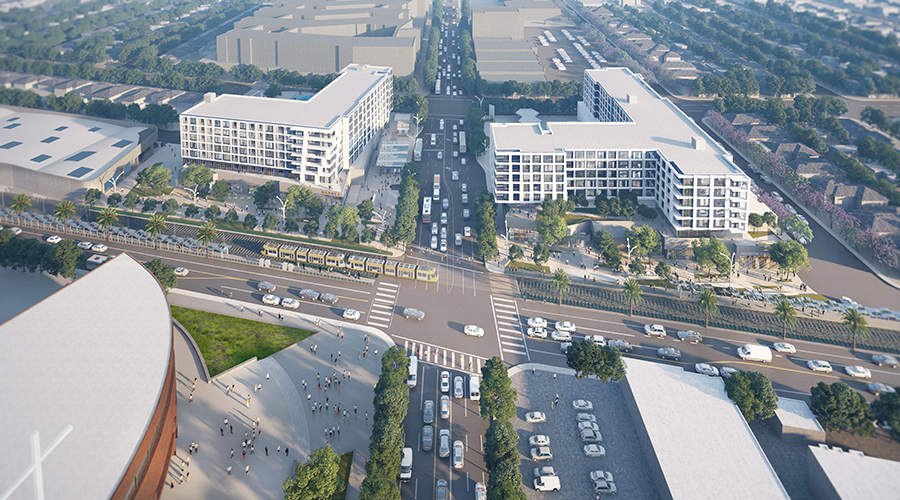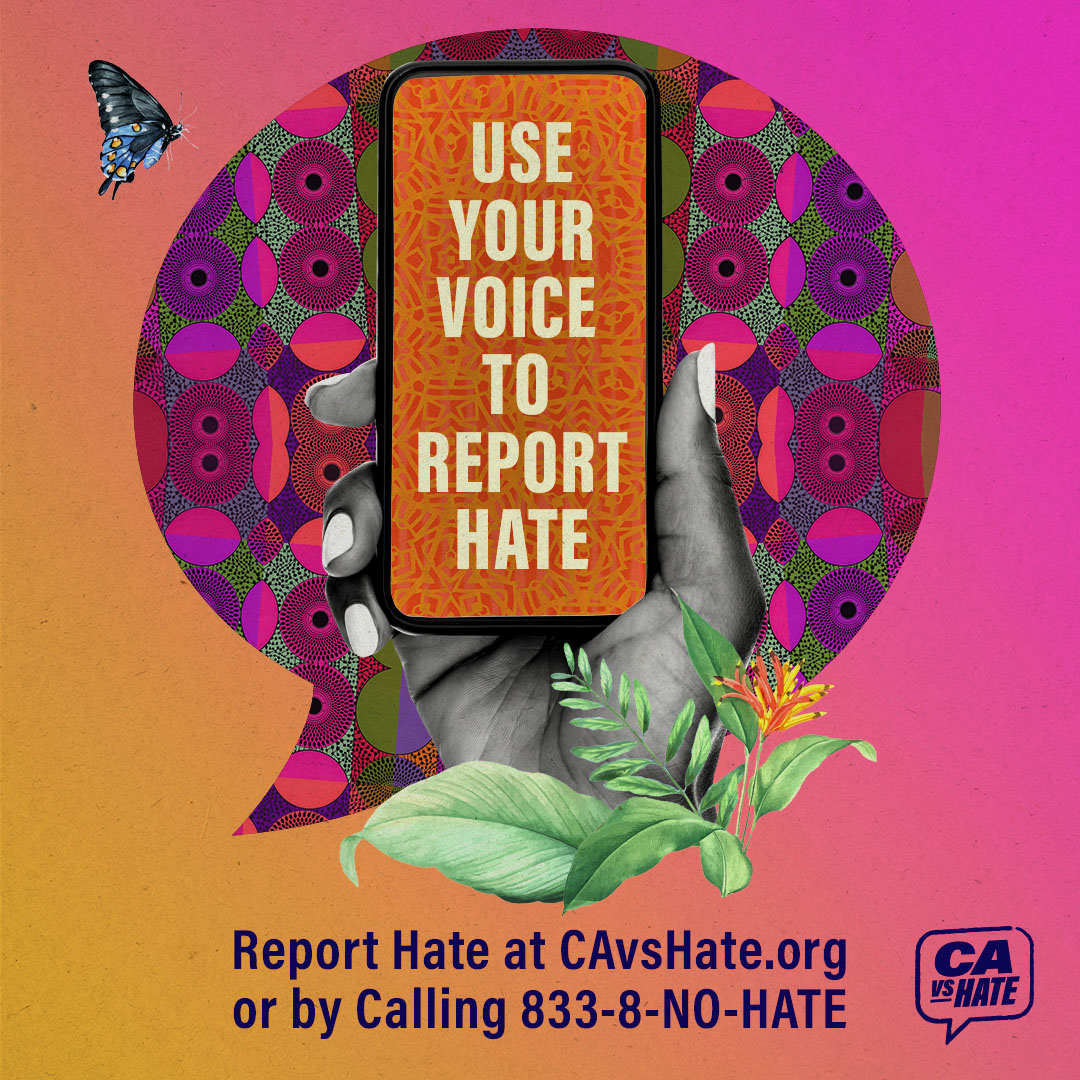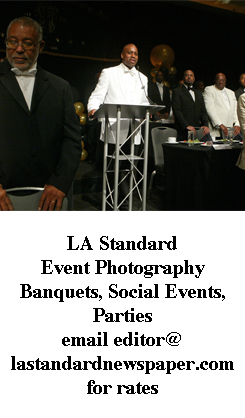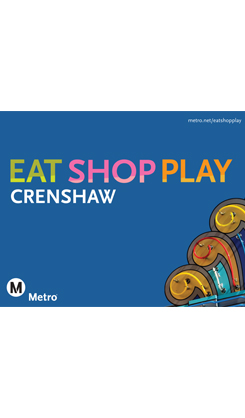“We’re focused on making it 100 percent affordable so that people in the community can afford to live there opposed to building something for people outside of the community to come in and live there.”
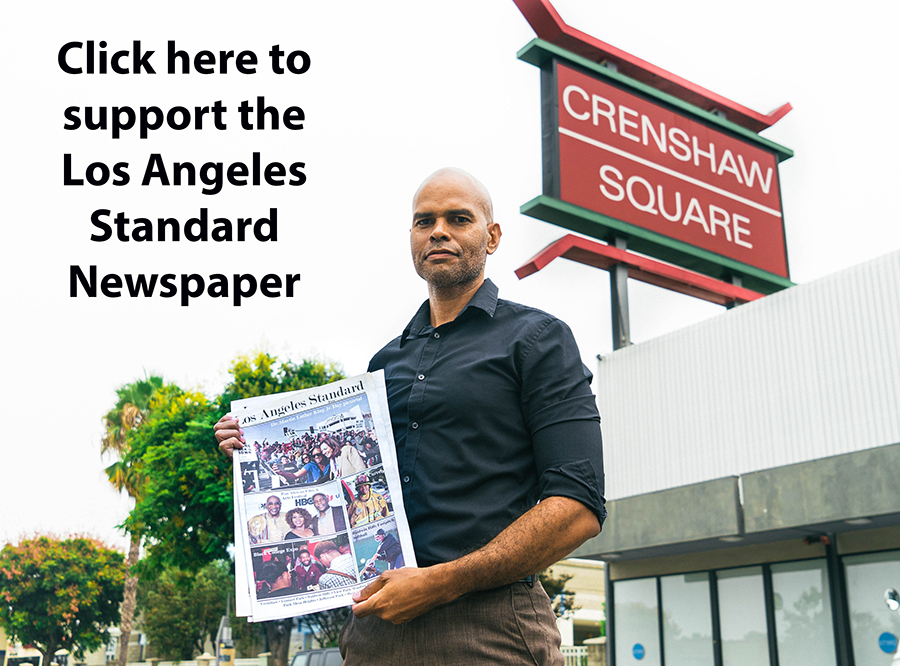
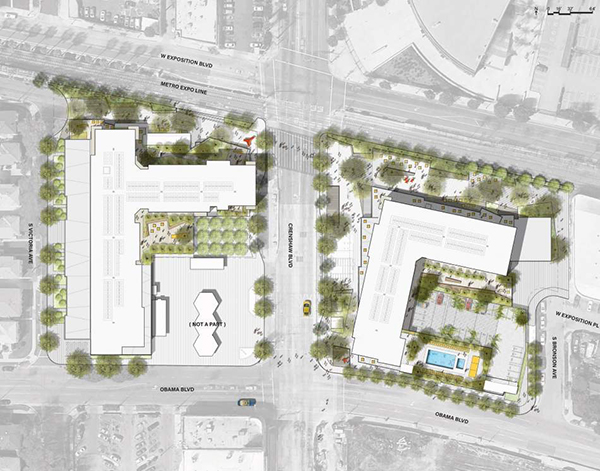
By Tracey Edwards
Crenshaw Crossing looks to be more than just another high-rise apartment building that is placed along a Los Angeles Metro stop. This project aims to be a community hub where locals can shop, eat outdoors, and attend community gatherings.
This project will have 401 rental apartment units with the goal of being 100 percent affordable, according to Jennifer McElyea, managing partner of the Watts Company, which is developing the property in partnership with the West Angeles Community Development Corporation and the Richman Group.
This site of the project sits on the east and west side of Crenshaw Blvd., between Exposition Boulevard to the north and Obama Boulevard to the south. The Shell gas station is not included in the project. The lot on the east side of the project is owned by Los Angeles Metro, and the lot on the west side of the project is owned by Los Angeles County. The Watts Company and West Angeles CDC will lease the land, making this a public/private project.
“Because it’s on pubic land, there are already requirements on what we have to build there based on what the community said that they’d want to see there,” McElyea said.
The Watts Company spent three years doing community outreach in the immediate Crenshaw District to find out what local residents would like to see.
“What we heard was that there were people living in the community who were looking for deeply affordable (housing),” McElyea said. “People on fixed incomes, or no income. We’re looking at extremely low income, which is making zero to 30 percent of area medium income. We’re accommodating 100 units for those types of tenants. Then low income at 50% of area medium income. And about half of the project will be at 80 percent of area medium income, which is the average income of the Crenshaw community for a family of four. That’s $50,000 to $80,000 of household income. So we’re trying to meet the spectrum of tenant profiles because some people make too much to qualify for affordable housing, but they can’t afford market. So we’re really trying to hit every segment of the community.
“We’re focused on making it 100 percent affordable so that people in the community can afford to live there as opposed to building something for people outside of the community to come in and live there.”
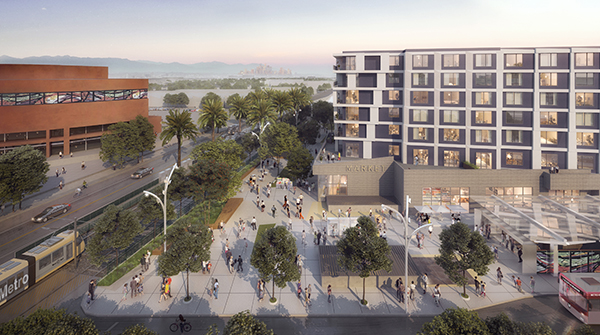
This site will have 40,000 square feet of commercial space on the ground floor, and that will include a grocer. This project has some similarities to the Wilshire/Vermont apartment complex, which has retail stores on the ground level and apartment units on the floors above. That project has a courtyard in the center which leads to a LA Metro light rail stop. It has a Chipotle Mexican Grill, a Chase Bank, UPS Store, Yogurtland, T-Mobile, and other retail stores.
Crenshaw Crossing will differ in that it will feature retail stores, restaurants, and gathering spaces from local Black-owned businesses.
“We spent a lot of time doing local outreach to bring in local vendors,” McElyea said. “We have letters of intent with Hilltop Coffee (Black-owned coffee shop with locations in View Park and Inglewood), L.A. Create Space (Black-owned co-working space in Inglewood), and we’re looking at providing subsidies so that other community organizations can have very high visible, high profile location to grow their business.”
Another difference from the Wilshire/Vermont project is that Crenshaw Crossing will have more green space and more open areas where locals can gather.
“What we’re hoping to do is creating a gathering space for the community and activate that area,” McElyea said. “It is a hub already because of West Angeles across the street. We’re going to make this a place where people want to stop by and spend their time.”
Black communities in Los Angeles are considered food deserts. There used to be a Ralphs grocery store on the vacant lot just south of this project. The Ralphs on Martin Luther King Jr. Boulevard and Western Avenue closed several years ago, and the Ralphs on Crenshaw Boulevard and Slauson Avenue closed last year. So it’s very important that Crenshaw Crossing will have a grocer.
“Overwhelmingly the feedback we got was that, ‘We want fresh food options,’” McElyea said. “Since this project started the Ralphs closed at Crenshaw and Slauson, so that’s one less grocer in the community. So there is a resounding desire to more food options.”
There will also be 3,000 square feet for community service use.
“We’re talking to see local nonprofits who may be interested in programming that space with opportunities for classes or activities for children and seniors,” McElyea said.
Projects of this nature usually cause locals to have concerns about gentrification, as many new housing developments have apartments that are at market rate, which many locals cannot afford. But the intent of Crenshaw Crossing is to be for the people who have called the Crenshaw District home for decades.
“We want it to feel like a local place,” McElyea said. “This will maintain the character of things that are already popular and appreciated in the Crenshaw neighborhood. We want it to feel like a public place. The public area is for the community and the housing is for the community. It’s more likely than not that if you have a job in downtown Culver City working for Apple, you’re going to make too much money to qualify to live at the property. So it’s intended to be affordable to people who are working and living in the community.”
Two other major concerns of a project like this are traffic and parking. McElyea said that environmental studies show that there will be no substantial impact on traffic, and the project will have 500 parking stalls.
The timeline for this project is to break ground in 2024, and it will take two years to complete construction.
For more information about Crenshaw Crossing, visit www.crenshawcrossingla.com.


